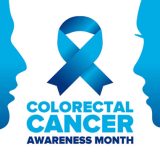

Breast Cancer Background
While most breast cancers start in the milk ducts, some begin in the lobular glands that make the milk and sarcomas, or lymphomas may begin in yet other types of breast tissue. Most breast cancers cause a lump, but there are several types that do not. Breast cancer may be genetic or may be caused by lifestyle factors like smoking, alcohol consumption, and being obese.
Signs and Symptoms of Breast Cancer
Any changes in your breast tissue should be checked out.
- Breast cancer can cause lumps, swelling, dimpling, and indents.
- It can cause your nipple to become caved in.
- Breast cancer may cause fluid to leak from your nipple.
- It can also cause pain in your breast or nipples.
There are many lymph nodes under your arms (axillary nodes), around your collar bone (supraclavicular and infraclavicular), and along your breast bone (internal mammary lymph nodes). If cancer reaches these lymph nodes it can travel throughout your body spreading, or metastasizing, to other areas of your body.
How to Perform Self Breast Exams
About 40% of breast cancers are found by women who find changes in their breast tissue during a self-exam. Breast self-exams should be done at least once per month by pressing two or three finger pads into breast tissue with a circular motion to feel the texture of the tissue. Begin with the outer edge and work your way toward center, being sure to check the entire breast. When you become familiar with the texture of your breast tissue, you will be the first to notice any changes – which should be reported to your physician immediately.
Learn more about the benefits of shaking and squeezing your tatas.
Mammograms
Mammograms are X-rays of your breast tissue that can detect lumps or cysts in the tissue. The breast tissue is squeezed between two plates and the X-ray is then taken of the tissue. Women over 40 should have a mammogram every 1-2 years, while women under 40 should discuss their risk factors with their doctor to determine frequency of mammograms.
New Imaging Tests
New imaging tests are being developed that can now determine if circulating tumor cells, or CTCs, have metastasized, or spread beyond the site of the breast cancer. Scintimammography (molecular breast imaging) involves injecting a slightly radioactive drug called a tracer, which then attaches to breast cancer cells and can be detected by a special camera.
New Breast Cancer Treatment Options
New treatment options have become available as aromatase inhibitors such as exemestane and anastrozole, which have been shown to be effective in preventing breast cancer. Non-hormonal drugs such as non-steroidal anti-inflammatory drugs and statins are also being studied to determine their cancer-reduction abilities. New surgeries are also being developed which allow for tumors to be removed without the entire breast, as well as new reconstruction options that allow for faster recovery.




